
POWER POINT QUE TIENE COMO OBJETIVO PRINCIPAL LA ALIMENTACION DE PACIENTES DIABETICOS QUE ADEMAS TIENEN QUE REALIZAR EL TRATAMIENTO DE DIALISIS.
- Subject:
- Health, Medicine and Nursing
- Material Type:
- Lesson
- Author:
- David Jara
- Date Added:
- 12/10/2020

POWER POINT QUE TIENE COMO OBJETIVO PRINCIPAL LA ALIMENTACION DE PACIENTES DIABETICOS QUE ADEMAS TIENEN QUE REALIZAR EL TRATAMIENTO DE DIALISIS.

This resource is a video abstract of a research paper created by Research Square on behalf of its authors. It provides a synopsis that's easy to understand, and can be used to introduce the topics it covers to students, researchers, and the general public. The video's transcript is also provided in full, with a portion provided below for preview:
"Individuals with metabolic syndrome have a 2-fold increased risk of cardiovascular disease, but few strategies provide adequate cardiovascular risk reduction for this group. One option to lower this risk is to reduce atherogenic lipids, particularly low-density lipoprotein cholesterol. Statins are a recommended first-line therapy for this purpose, but this approach doesn’t always provide sufficient LDL-C lowering to optimally reduce cardiovascular risk. Now, researchers have shown that alirocumab, a proprotein converstase subtilisin/kexin type 9 inhibitor, or PCSK9 inhibitor, approved for LDL-C reduction, may address this need. Pooled clinical trial data from ten phase 3 clinical trials from the ODYSSEY clinical development program showed alirocumab significantly lowered LDL-C in individuals both with and without metabolic syndrome..."
The rest of the transcript, along with a link to the research itself, is available on the resource itself.

This resource is a video abstract of a research paper created by Research Square on behalf of its authors. It provides a synopsis that's easy to understand, and can be used to introduce the topics it covers to students, researchers, and the general public. The video's transcript is also provided in full, with a portion provided below for preview:
"Alirocumab, a drug that inhibits PCSK9 and helps clear the blood of atherogenic lipids, may be of benefit for individuals with type 2 diabetes who are most at risk of cardiovascular disease. According to the International Diabetes Federation, heart disease is the leading cause of death among people with type 2 diabetes. One factor that might contribute to that grim statistic is the high mixed dyslipidemia prevalence in this population. Mixed dyslipidemia is characterized by elevated triglycerides, and hence high triglyceride-rich lipoprotein, or remnant cholesterol, and high cholesterol levels; and low serum levels of high-density lipoprotein cholesterol, or HDL-C. Despite treatment with statins and other lipid-lowering therapies targeting atherogenic lipoproteins, management of mixed dyslipidemia remains challenging, especially among individuals with diabetes..."
The rest of the transcript, along with a link to the research itself, is available on the resource itself.
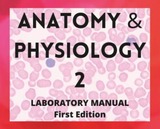
Laboratory manual for undergraduate Anatomy & Physiology 2

After completing this unit, the student will be able to discuss the historical perspective of foot care, identify the role of the Registered Nurse and Registered Practical Nurse in foot care, recognize the limitations beyond the scope of practice of foot care for Registered Nurses and Registered Practical Nurses and make appropriate referral, and identify other providers of foot care and their scope of practice.

This course illustrates how knowledge and principles of biology, biochemistry, and engineering are integrated to create new products for societal benefit. It uses a case study format to examine recently developed products of pharmaceutical and biotechnology industries: how a product evolves from initial idea, through patents, testing, evaluation, production, and marketing. Emphasizes scientific and engineering principles; the responsibility scientists, engineers, and business executives have for the consequences of their technology; and instruction and practice in written and oral communication.
The topic focus of this class will vary from year to year. This version looks at inflammation underlying many diseases, specifically its role in cancer, diabetes, and cardiovascular disease.

This resource is a video abstract of a research paper created by Research Square on behalf of its authors. It provides a synopsis that's easy to understand, and can be used to introduce the topics it covers to students, researchers, and the general public. The video's transcript is also provided in full, with a portion provided below for preview:
"New findings from the ACTIONI-O study suggest that when it comes to tackling weight loss, people with obesity and healthcare professionals don’t always see eye to eye. Reported misconceptions about the factors contributing to obesity and about patient attitudes suggest much room for improving communication and education. In what’s considered the largest study of its type, researchers surveyed more than 14500 people with obesity and more than 2700 healthcare professionals treating patients with obesity in 11 countries. Surveys designed foreach group asked about perceived attitudes, behaviors, and barriers to effective obesity care. For example, patients were asked whether they consider their weight loss completely their responsibility. While clinicians were asked, among other things, to rank criteria they consider in determining whether to spark a discussion with a patient about obesity, such as patient weight, BMI, or mental state..."
The rest of the transcript, along with a link to the research itself, is available on the resource itself.

This resource is a video abstract of a research paper created by Research Square on behalf of its authors. It provides a synopsis that's easy to understand, and can be used to introduce the topics it covers to students, researchers, and the general public. The video's transcript is also provided in full, with a portion provided below for preview:
"Type 1 diabetes mellitus (T1D) is an autoimmune disease defined by destroyed pancreatic β-cells. which results in impaired insulin secretion and hyperglycemia, but one complication of T1D gets less attention than the others: cognitive dysfunction. Previous studies reported that modification of gut microbiota can reduce the incidence of T1D. So, researchers from Wenzhou Medical University hypothesized that modified gut microbiota may also affect cognitive function in T1D. Using an induced mouse model of T1D, researchers modified the microbiota with an antibiotic and measured the impact of these microbial changes on cognitive performance. Antibiotic-treated mice (TD1V) had a disrupted microbiome and altered host metabolic phenotypes. Antibiotic-treated mice (blue) also showed greater cognitive impairment than induced T1D alone (red). The antibiotic treatment depleted acetate-producing bacteria, which lead to long-term acetate deficiency..."
The rest of the transcript, along with a link to the research itself, is available on the resource itself.
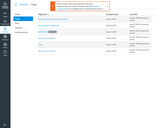
Diabetes is a disease that occurs when your body doesn’t make or use the hormone insulin properly. It causes too much blood glucose (sugar) to build up in the blood.
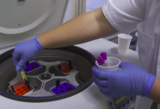
The aim of this presentation is to address different hot topics in our current understanding of aetiology as well as of the pathophysiology of Type 2 Diabetes. We’ll address how genetic as well as epi-genetic and non-genetic mechanisms may be involved in the complex mechanisms underlying type 2 diabetes. We’ll also introduce recent data suggesting that immature stem-cell functions are likely to play an important role for development of type 2 diabetes and its associated cardiometabolic disturbances. Finally we’ll address the current treatment options of disease with respect of both pharmacological and non-pharmacological treatment modalities.
Course responsible: Associate Professor Signe Sørensen Torekov, MD Nicolai Wewer Albrechtsen & Professor Jens Juul Holst
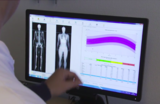
This presentation address the multifactorial etiology of type 2 diabetes. The multifactorial etiology, can be divided into three major categories, primary predisposing factors, secondary precipitating factors, as well as tertiary accelerating factors.
Course responsible: Associate Professor Signe Sørensen Torekov, MD Nicolai Wewer Albrechtsen & Professor Jens Juul Holst
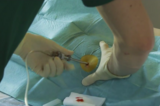
The aim of this presentation is to address and understand the paradigm shifting consequences of the Thrifty Phenotype Hypothesis as a conceptual framework to understand the roots of type 2 diabetes.
Course responsible: Associate Professor Signe Sørensen Torekov, MD Nicolai Wewer Albrechtsen & Professor Jens Juul Holst

During the last couple of decades two new remarkably successful principles for diabetes therapy have appeared and are now used worldwide. These are incretin based therapy and surgical therapy. These two are at some extent linked together and in this lecture we’ll provide an introduction to these two principles for diabetes therapy.
Course responsible: Associate Professor Signe Sørensen Torekov, MD Nicolai Wewer Albrechtsen & Professor Jens Juul Holst

In this presentation we’ll talk about the effects of GLP-1 (Glucagon Like Peptide 1), GLP-1 has important actions on gastrointestinal secretion and motility, and it acts to inhibit appetite and food intake. In continuation of the effects of GLP-1, we’ll talk about GLP-1, GIP, lipids, proteins, and dipeptidyl peptidase-4.
Course responsible: Associate Professor Signe Sørensen Torekov, MD Nicolai Wewer Albrechtsen & Professor Jens Juul Holst
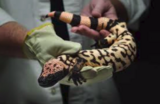
This presentation talks about intravenously GLP-1 infusion to patients with type 2 diabetes. The GLP-1 infusion is capable of restoring fasting glucose concentrations during the night time and can nearly normalize the meal-induced glucose excursions after meal ingestion. GLP-1 has many attractive actions regarding diabetes type 2 treatment, which is the theme of this presentation.
Course responsible: Associate Professor Signe Sørensen Torekov, MD Nicolai Wewer Albrechtsen & Professor Jens Juul Holst
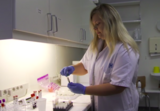
This presentation provides an introduction to some of the basic aspects of the epidemiology of diabetes. In continuation of this we’ll discuss why diabetes is such a serious disease and what the biological mechanics of the disease are.
Course responsible: Associate Professor Signe Sørensen Torekov, MD Nicolai Wewer Albrechtsen & Professor Jens Juul Holst

This presentation will look at how the distribution of diabetes is, thus we’ll discuss how the distribution of diabetes are by type, gender, age, geographical region and ethnicity. The purpose of this discussion is to understand how serious a health problem the global epidemic of diabetes is, while increasing the understanding that it’s extremely necessary that we do whatever we can to fight against the diabetes epidemic in the future.
Course responsible: Associate Professor Signe Sørensen Torekov, MD Nicolai Wewer Albrechtsen & Professor Jens Juul Holst
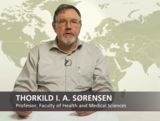
This presentation tries to identify the most important risk factors for developing diabetes. In order to take the next steps in planning diabetes prevention, we need to know what distinguished those at risk of developing diabetes from those who aren’t or are at lower risk within the populations.
Course responsible: Associate Professor Signe Sørensen Torekov, MD Nicolai Wewer Albrechtsen & Professor Jens Juul Holst
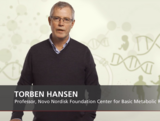
This presentation provides an introduction to the genetic aspects of non-autoimmune diabetes. First we’ll introduce the genetic basis of diabetes, then we’ll talk about methods to identify genetic loci associated with diabetes and pre-diabetic traits. In continuation of this, we’ll provide examples of monogenic forms of diabetes and finally we’ll discuss common forms of non-autoimmune diabetes.
Course responsible: Associate Professor Signe Sørensen Torekov, MD Nicolai Wewer Albrechtsen & Professor Jens Juul Holst

This presentation provides an introduction to methods used to identify genetic loci affecting diabetes and pre-diabetes traits. Furthermore we’ll discuss aspects that are important when choosing and considering different methods.
Course responsible: Associate Professor Signe Sørensen Torekov, MD Nicolai Wewer Albrechtsen & Professor Jens Juul Holst